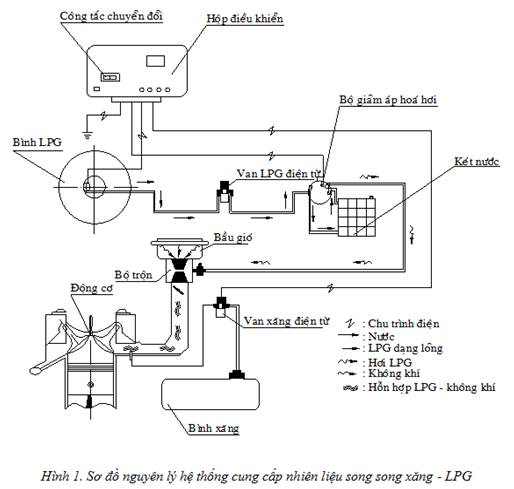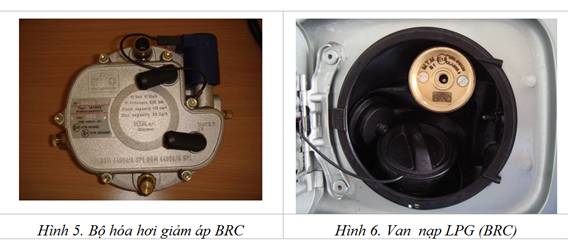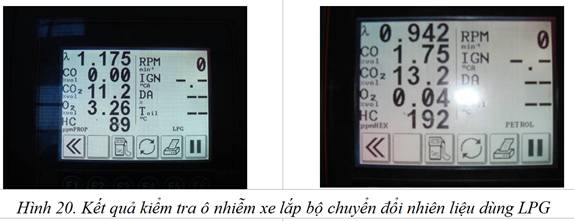LPG AutomobileCONVERTING GASOLINE AUTOMOBILE
INTO LPG AUTOMOBILE
PGS.TS. Trần Thanh Hải Tùng
1. System Diagram

2. Operation principles of LPG/petrol system in parallel
Figure 1 presents the system layout supplying parallel petrol-LPG for automobiles. Petrol circuit locked completely (disconnecting petrol and turning the switch to LPG position). High pressured Liquid LPG (7 Kg/cm2) from the tank through the safety valve to the pressure reducer converting to LPG vapor at pressure of 0.5 KG/cm2 and goes to the mixer. When the engine operates, the air is drawn in through the air filter to the mixer in combination with LPG vapor mixed into LPG-air at the appropriate rate according to the working regime of the engine. To ensure engine working economically and achieving maximum power, LPG supply system is installed with two additional LPG supply lines supplementing for thickening circuit in accordance with gas butterfly position. When switching to petrol, unlock petrol valve and turn the switch to the petrol position. Now entire LPG system is disconnected and gas system works just like the original.
3. The basic details of LPG supplying system installed on TOYOTA INNOVA and VIOS cars.
LPG supplying system is positioned on TOYOTA INNOVA, VIOS cars as in Figure 2:





4. Engine power.
For INNOVA
Engine running on LPG with Nemax = 89.19 (KW)
Engine running on petrol with Nemax = 134 ml = 98 kW
Reduced power rate when running on LPG is: d = 9%


For VIOS Car
Engine running on LPG with Nemax = (KW)
Engine running on petrol with Nemax = 78 (KW)
Reduced power rate when running on LPG is: d = 5%5. Vehicle traction
For INNOVA
Dynamic calculation results show:
– Maximum movementspeedof thecar : Vmax = 169 Km/h;
– Maximum dynamic factor : Dmax = 0.4869;
– Maximum uphilling capacity : imax = 0.4869 – 0.02 »0.46 (46%),

For VIOS Car
Dynamic calculation results show:
– Maximum movementspeedof thecar: Vmax = 171.9 Km/h;
– Maximum dynamic factor: Dmax = 0.55;
– Maximum uphilling capacity: imax = 0.55 – 0.02 = 0.53 (53%),
– Conclusion: The calculation results show designed car is satisfactory to the regulations.

6. Carrying out research results
We designed and installed a LPG kit for two passenger cars Toyota Innova and Toyota Vios. The designs have been approved by the Vietnam Registration-Control Agency and allowed being applied.




7. Testing results
During the test, the drivers’ feedback shows:
– Stable operation, good acceleration, easy launch.
– Uphilling capacity is as the same when running on petrol
– No difference of the engine running on LPG from running on petrol and vice versa
– average consumption of LPG is 5.5 – 6kg/100km depending on the kind of roads (compared with no addition of thickeningsystem is 7-8kg/100km)
– Testing exhaust gas, analyzing tool shows theconcentration of pollutants such as CO, HC reduced by over 50% when using LPG compared with using petrol.
English Translation by RP











